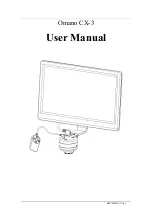
Annexes
R&S
®
ZNB/ZNBT
1546
User Manual 1173.9163.02 ─ 62
12.3.4.2
Data ports
In addition to the control signals, the Universal Interface provides four bi-directional
data ports A, B, C, D. The data ports must be configured explicitly using SCPI com-
mands; they are not controlled by the measurement.
●
With an output data port, you can configure the part handler or other devices used
in testing from the network analyzer.
●
With an input data port, you can configure the network analyzer using external sig-
nals and an appropriate control program.
Device configurations via data port signals are usually performed in a preliminary
stage, before the actual measurement sequence. If the "Index" and "Ready for Trigger"
signals are enabled at this stage (see
Chapter 12.3.4.1, "Control signals"
on page 1545), they replace the PORT B6 and PORT B7 signals. Port B can still be
used as a 6-bit parallel input/output port.
Figure 12-3: Data ports and related signals
Combined ports (ports E, F, G, H)
A combination of ports A / B and ports C /D provides two additional 16-bit and 8-bit-
wide bidirectional ports. The combined ports are termed ports E and F, respectively. A
combination of ports A / B / C and ports A / B / C / D provides two 20-bit and 24-bit-
wide bidirectional ports. These combined ports are termed ports G and H.
Interfaces and connectors
















































